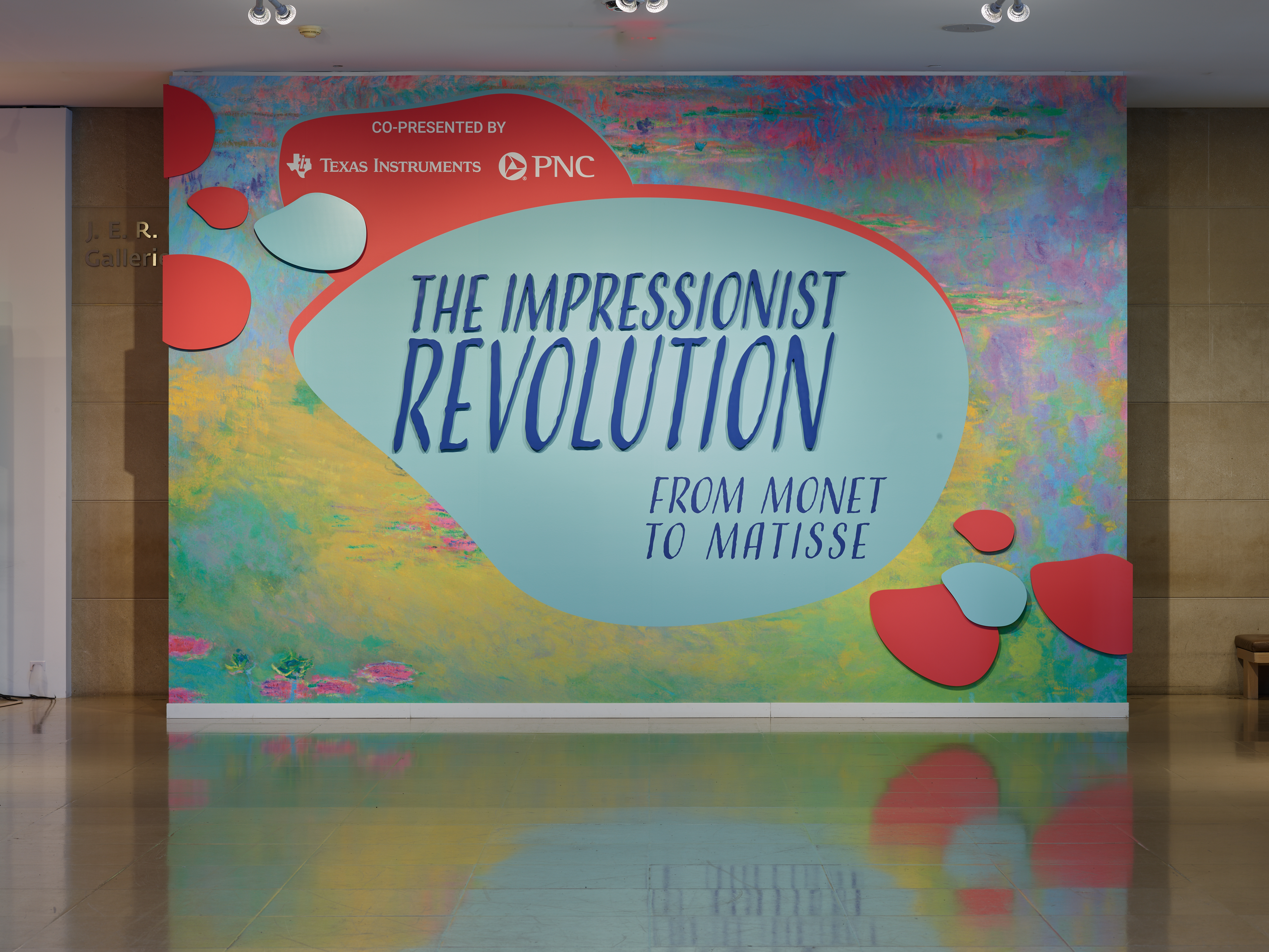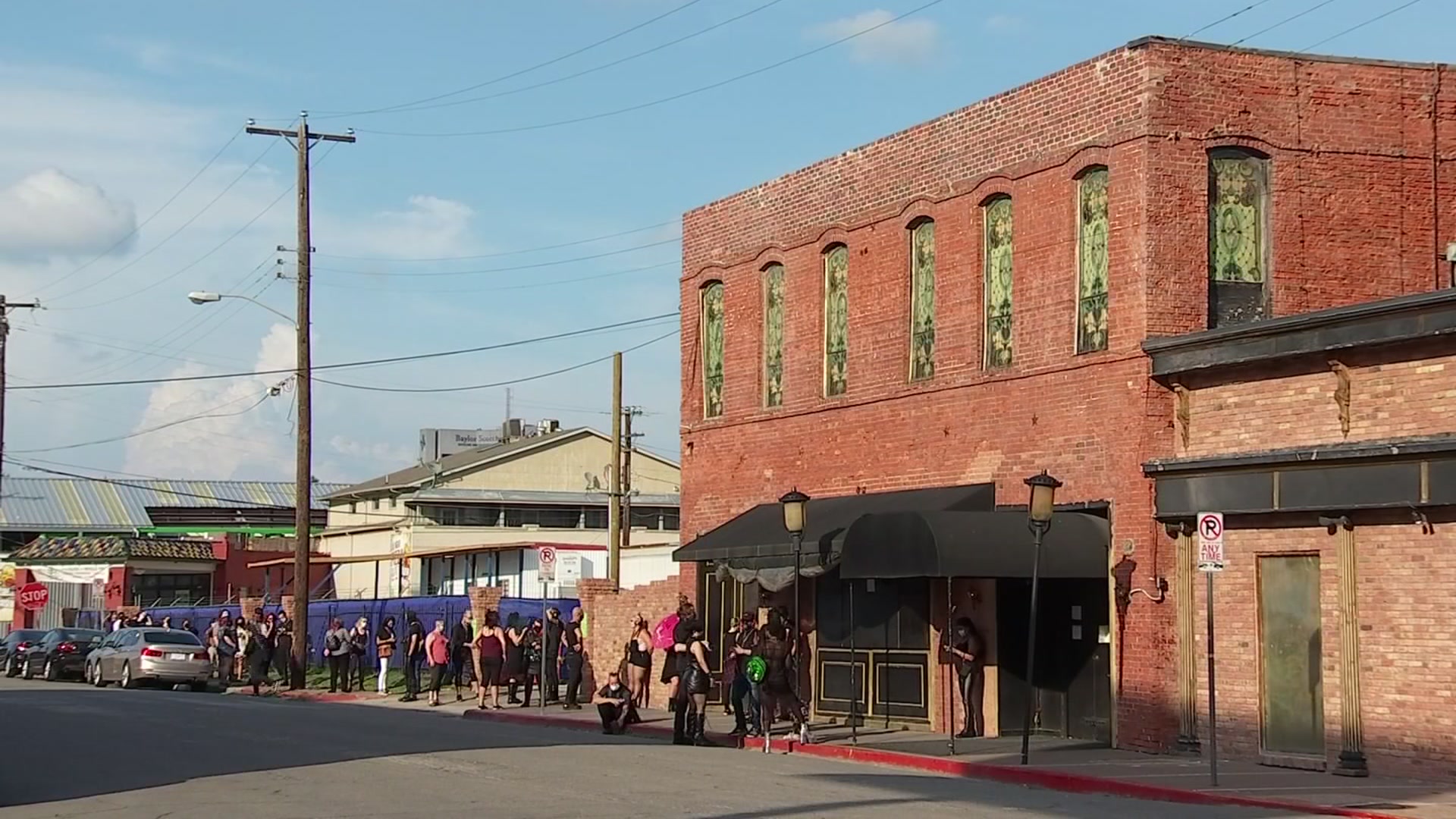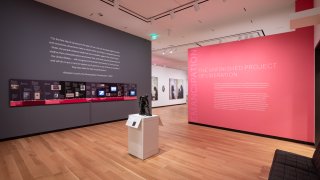
When Abraham Lincoln issued the Emancipation Proclamation on January 1, 1863, it was only the beginning for the cause of liberation. Emancipation: The Unfinished Project of Liberation, an exhibition now on view at the Amon Carter Museum of American Art in Fort Worth through July 9, investigates the progress of that cause in the 21st century through the lens of seven Black contemporary artists.
Sadie Barnette, Alfred Conteh, Maya Freelon, Hugh Hayden, Letitia Huckaby, Jeffrey Meris and Sable Elyse Smith drew inspiration for their newly commissioned and recent works from John Quincy Adams Ward’s bronze sculpture The Freedman, a piece that dates from 1863. The sculpture, part of the Carter's collection since 2000, depicts a man on the cusp of liberation with his bonds broken but not removed.
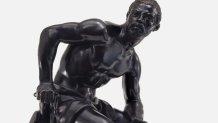
“We try at the Carter to use our collection as inspiration,” said Maggie Adler, Curator of Paintings, Sculpture, Works on Paper at the Carter and co-curator of this exhibition. “The date 1863 is significant because it was before the end of the Civil War, before anyone knew the outcome of the war.”
Get DFW local news, weather forecasts and entertainment stories to your inbox. Sign up for NBC DFW newsletters.
“It’s a very distinctive piece,” said Maurita Poole, Executive Director of Newcomb Art Museum, Tulane University and co-curator of this exhibition. “It’s very rare that you see a Black figure with that level of agency.”
The artists were given flexibility to explore their understanding of liberation.
“We really chose artists whose work centers around ideas of emancipation, liberation, freedom or lack of,” Adler said. “The only instruction we gave them was, ‘Make work that’s based on your conception of freedom or emancipation today.’”
The Scene
“These artists do mostly three-dimensional work, the majority of them, and that was pretty exciting. We wanted artists that could produce objects that would give people a different sense of that history in the work because we start with a sculpture,” Poole said.
The installations ranging in sculpture, photography and paper and textile fabrications explore how the legacy of the Civil War manifests itself in the 21st century.
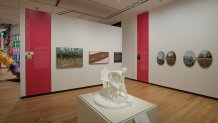
“Most of the works reference that historical moment but also try to speak to the challenges that African Americans are having in society today and show those issues with inequity that have its origins in this historic period in American history and the history of enslavement,” Poole said.
Hugh Hayden used The Freedman as a model for his contribution to the exhibition.
“He spent a long time thinking about what this Freedman would look like if he was a 21st-century man,” Adler said.
The museum provided Hayden with a high-resolution three-dimensional scan of the historic sculpture.
“You see the same exact figure down to the width of a human hair, but the fact that he’s in 21st-century clothing, including flip flops, really changes the expression on his face, but it’s the same exact face that’s on the figure in the historical sculpture,” Adler said. “It’s kind of shocking that just the context changes the emotional valence of that work.”
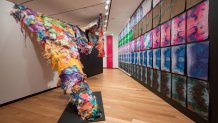
Maya Freelon was interested in who owned The Freedman before the Carter acquired it as she created her colorful tissue-paper installation. The sculpture once sat on the piano of Dr. Zelma Watson George, a Texas-born diplomat, social program and university administrator. Sadie Barnette's piece references her father, a leader of the Black Panther Party, and her family's history as told through government watch lists.
Jeffrey Meris’ piece depicting casts of his body ground into plaster dust startled Adler.
“I hadn’t anticipated the noise and the violence of that work,” Adler said.
Co-organized by the Carter and the Williams College Museum of Art in Massachusetts, the exhibition was developed during the pandemic. Although the artists did not meet each other before the exhibition opened and the curators were unable to conduct in-studio visits, the exhibition has a distinctive synergy.
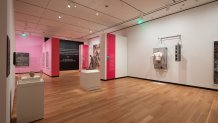
“Somehow, the show is cohesive,” Poole said.
The unique aspects of the works show the diversity within the African American community.
“The differences among them show there is no unified Black experience to show. It’s everything from joy to pain to celebration to Hello Kitty and glitter to rust and decay,” Adler said.
Together, these works show the aspirational essence of this nation.
“For me, it speaks more about what it means to be American and what is the foundation to our nation-state. What does freedom mean in relation to the United States for the entire society?” Poole said.
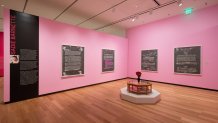
Viewing emancipation as an unfinished project makes historic works like The Freedman even more relevant today.
“If the project were finished, then there would be no relationship between the contemporary artworks and the historical, but the fact that there is that connection and similarity of experience is very telling about the course that society has taken in 160 years,” Adler said.
Following its exhibition at the Carter, Emancipation: The Unfinished Project of Liberation will travel to Newcomb Art Museum, Tulane University and Williams College Museum of Art.
Learn more: Amon Carter Museum of American Art

